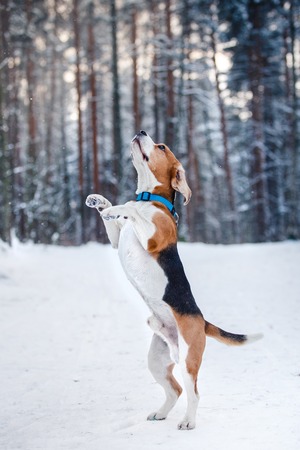Understanding the British Weather
When it comes to outdoor training in the UK, one of the most important factors to consider is the famously unpredictable British weather. Unlike many other regions, the UK’s climate is shaped by its island geography and proximity to the Atlantic Ocean, resulting in rapid changes from sunshine to showers, sometimes within the space of an hour. Each season brings its own unique set of challenges: spring can be damp and blustery, summer is often mild but punctuated by sudden downpours, autumn ushers in cooler temperatures and gusty winds, while winter typically delivers chilly rain rather than heavy snow. This constant variability means that anyone committed to year-round outdoor training must be ready for anything. Understanding these patterns—and their impact on your routine—is key to staying healthy, safe, and motivated as you adapt your fitness plans throughout the year.
Preparing for Rain and Damp Conditions
Britain’s unpredictable weather means rain is always just around the corner, making it vital to adapt your training routine for wet and damp conditions. The right gear not only keeps you comfortable but also helps prevent common health issues like colds, blisters, and slips. Waterproof clothing and footwear are key investments for anyone training outdoors in the UK.
Essential Gear for Wet Weather Training
Selecting appropriate outerwear is your first line of defence against the British drizzle. Lightweight waterproof jackets with breathable fabrics help regulate temperature while keeping you dry. Look for features like adjustable hoods, taped seams, and reflective strips for visibility during darker mornings or evenings. Pair your jacket with moisture-wicking base layers to prevent overheating and keep sweat away from your skin.
Waterproofs and Footwear Recommendations
| Item | Key Features | Why It Matters |
|---|---|---|
| Waterproof Jacket | Breathable, taped seams, adjustable hood, reflective details | Keeps you dry without overheating; enhances safety in low-light conditions |
| Moisture-Wicking Base Layer | Synthetic or merino wool material | Prevents chill by moving sweat away from the body |
| Waterproof Trousers | Lightweight, quick-drying fabric | Protects legs from rain and mud splashes on trails or pavements |
| Trail Running Shoes/Trainers | Water-resistant uppers, grippy soles | Improves traction and stability on slippery surfaces; reduces risk of slipping |
Caring for Your Kit
After every session in the rain, dry your gear thoroughly to prevent mildew and odours. Use a soft brush to remove mud from shoes and hang jackets in a well-ventilated area. For added longevity, reapply waterproofing sprays to your jacket or footwear as needed. Investing in quality kit not only boosts comfort but also supports long-term health by minimising exposure to damp-related illnesses.

3. Making the Most of Limited Daylight
As British winter months bring shorter days and longer nights, adjusting your training schedule is crucial to stay safe and consistent. Early morning and evening sessions are often inevitable, so prioritising visibility and safety becomes essential. Always opt for well-lit routes in local parks or along established paths, and wear reflective clothing or accessories to ensure you’re visible to motorists, cyclists, and other pedestrians. If possible, try scheduling your runs or workouts during lunchtime when daylight is at its peak. For those who must train before dawn or after dusk, consider teaming up with a friend or joining a local running group for added security. Investing in a quality head torch or LED armband can make a significant difference during dimly lit hours. Finally, let someone know your planned route and expected return time—especially important in unpredictable British weather. By planning ahead and embracing these safer practices, you can keep your training on track throughout the darker winter months.
4. Protecting Your Health in Cold and Windy Weather
As the British weather can shift quickly from mild to bitterly cold and blustery, it’s crucial to prioritise your health when training outdoors. Cold temperatures combined with damp wind increase the risk of common ailments such as colds, flu, and even hypothermia if you’re not properly prepared. Here’s how to stay healthy and comfortable throughout your seasonal training.
Layering for Maximum Warmth
The key to maintaining body temperature is smart layering. Choose moisture-wicking base layers to keep sweat off your skin, add an insulating middle layer such as fleece or wool, and finish with a windproof and waterproof outer shell. This system traps warm air close to your body while allowing moisture to escape, keeping you dry and reducing the chill factor.
| Layer | Recommended Materials | Purpose |
|---|---|---|
| Base Layer | Merino wool, technical synthetic fabrics | Wicks moisture away from skin |
| Mid Layer | Fleece, lightweight down, wool | Insulates and retains heat |
| Outer Layer | GORE-TEX®, waterproof breathable jackets | Shields against wind and rain |
Practical Tips for Outdoor Activity in Chilly Conditions
- Cover Extremities: A significant amount of body heat is lost through the head, hands, and feet. Wear a thermal hat, gloves, and thick socks to prevent heat loss.
- Avoid Cotton: Cotton absorbs moisture and dries slowly, which can make you feel colder. Opt for performance fabrics instead.
- Pace Yourself: Start gently to allow your body temperature to rise gradually. Overexertion in cold weather increases risk of muscle strains.
- Stay Hydrated: Even in cooler weather, you lose fluids through sweat and breathing. Drink water regularly throughout your activity.
- Listen to Your Body: If you start feeling excessively chilled or fatigued, it’s wise to cut your session short and seek warmth indoors.
Avoiding Common Cold-Weather Illnesses
The British winter can be unforgiving, so taking these steps will help protect yourself from viruses and bacterial infections:
- Change Out of Damp Clothes Quickly: After exercising outdoors, switch into dry clothing as soon as possible to prevent chills.
- Nourish Your Immune System: Eat a balanced diet rich in fruit and vegetables; vitamin C, zinc, and antioxidants support immune function during cold months.
- Practice Good Hygiene: Wash hands thoroughly after outdoor activity—especially if using shared facilities like gyms or sports clubs.
Your Seasonal Training Checklist for Cold & Windy Days
- Dress in three layers (base, mid, outer)
- Cover head, hands, and feet adequately
- Cary a spare set of dry clothes in your kit bag
- Pace your workout sensibly and watch for signs of overexposure
- Support immunity with good nutrition and hygiene habits
Tuning into the unique challenges of British weather ensures you can enjoy outdoor exercise year-round while minimising health risks. Preparation is everything—layer up smartly and take proactive steps to stay well this season.
5. Adapting Workouts for Summer Heat and Humidity
Although Britain is famed for its cool, temperate climate, the occasional summer heatwave can catch even seasoned athletes off guard. When temperatures rise and humidity increases, its essential to adapt your training routine to protect your health and maintain performance. Here are some practical tips to help you stay safe and make the most of your workouts during those rare but intense British heatwaves.
Stay Hydrated
Hydration should be a top priority during hot spells. Begin your workout well-hydrated, and aim to sip water regularly throughout your session. For longer activities, consider adding an electrolyte drink to replenish minerals lost through sweat. Don’t rely solely on thirst as an indicator—plan regular hydration breaks, especially if you’re exercising outdoors or for extended periods.
Adjust Your Intensity Levels
It’s wise to lower the intensity or duration of your usual routine when the mercury climbs. Swap high-intensity intervals for steady-state cardio or reduce the length of your run or cycle. Listen to your body: if you feel dizzy, overly fatigued, or notice excessive sweating or shivering, stop immediately and seek shade.
Sun Safety Considerations
With longer daylight hours, UV exposure becomes a genuine concern—even in the UK. Apply a broad-spectrum sunscreen (SPF 30 or higher) before heading out, and reapply if you’ll be out for longer sessions. Opt for light-coloured, moisture-wicking clothing, a hat with a brim, and sunglasses that provide UV protection. Where possible, schedule outdoor exercise in the early morning or late evening to avoid peak sun intensity.
By making these adjustments during British heatwaves, you’ll safeguard your wellbeing while continuing to enjoy the benefits of regular physical activity throughout the summer months.
6. Incorporating Indoor Alternatives
British weather is famously unpredictable, making it essential to have reliable indoor alternatives when training outdoors becomes impractical. Whether it’s a relentless downpour or icy pavements, there are plenty of ways to maintain your fitness routine without stepping outside. Local leisure centres offer a wide range of classes, from spinning and Pilates to high-intensity interval training (HIIT), providing structured environments to stay active. Many Brits also take advantage of home workouts, using online platforms like Joe Wicks’ Body Coach TV or yoga sessions on YouTube for convenience and flexibility. If you prefer a social atmosphere, indoor climbing gyms and five-a-side football leagues are increasingly popular options across the UK, offering both exercise and camaraderie. Swimming at your local pool is another excellent full-body workout that’s gentle on the joints, making it suitable for all ages and abilities. For those short on time, even a brisk session on a treadmill or stationary bike can help you keep up your cardiovascular health when the weather outside is less than inviting. By embracing these indoor alternatives, you can ensure consistency in your training regardless of what the British skies bring.
7. Listening to Your Body and Staying Motivated
As the British weather shifts from brisk mornings to unpredictable downpours, it’s essential to tune in to your body’s signals and respond with care. Recognising when you’re feeling fatigued, noticing any aches, or observing changes in your mood are all crucial for injury prevention and maintaining long-term health. Rather than pushing through at all costs, adopt a flexible approach—if conditions are particularly harsh or you’re feeling under the weather, it’s perfectly sensible to adjust your goals or switch up your training plan.
Staying motivated can be challenging when faced with grey skies and chilly winds, but remember that resilience is a true British trait. Embrace the spirit of “keep calm and carry on,” setting realistic expectations for yourself during each season. Celebrate small victories, whether it’s completing a session despite the drizzle or simply making time for a gentle walk when more strenuous exercise isn’t possible.
Above all, prioritise well-being over rigid schedules. Take pride in listening to your body and adapting as needed—this not only supports physical health but also cultivates a positive mindset throughout the year. By staying attuned to both your environment and yourself, you’ll build a sustainable routine that weathers every British season.


